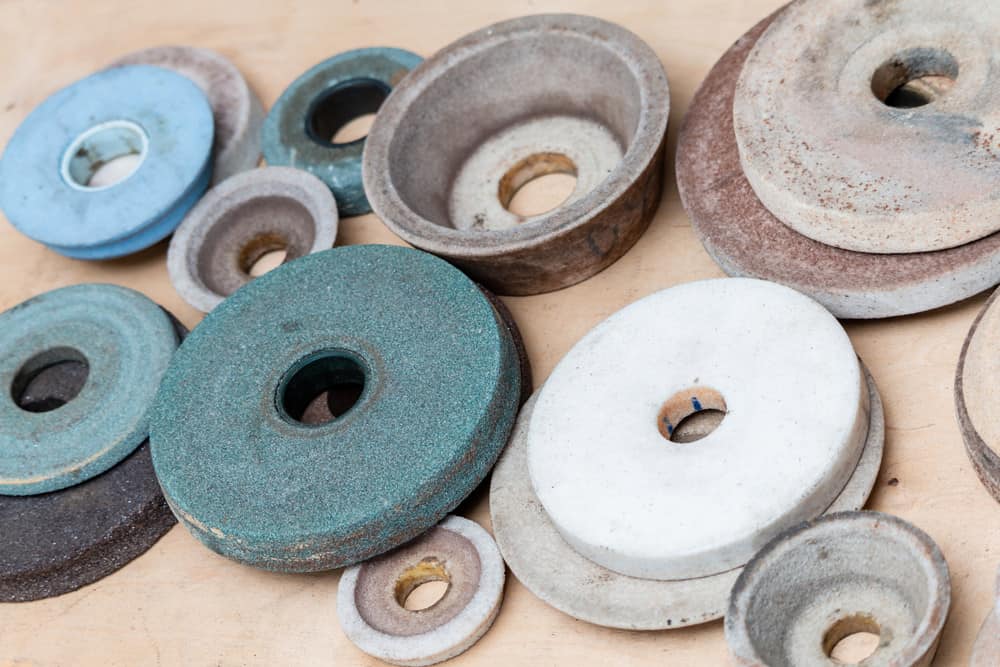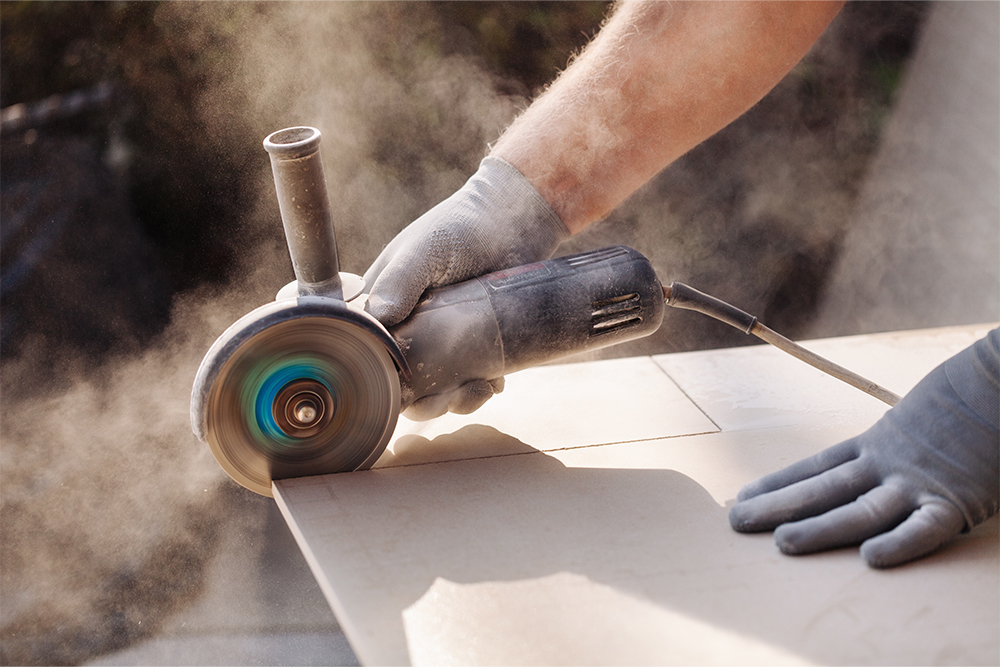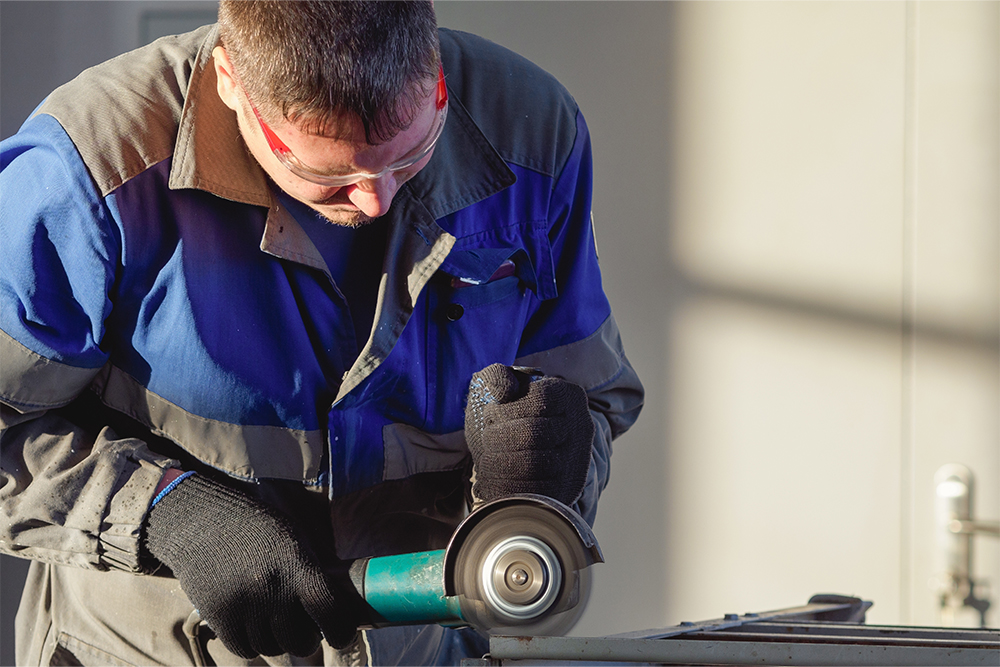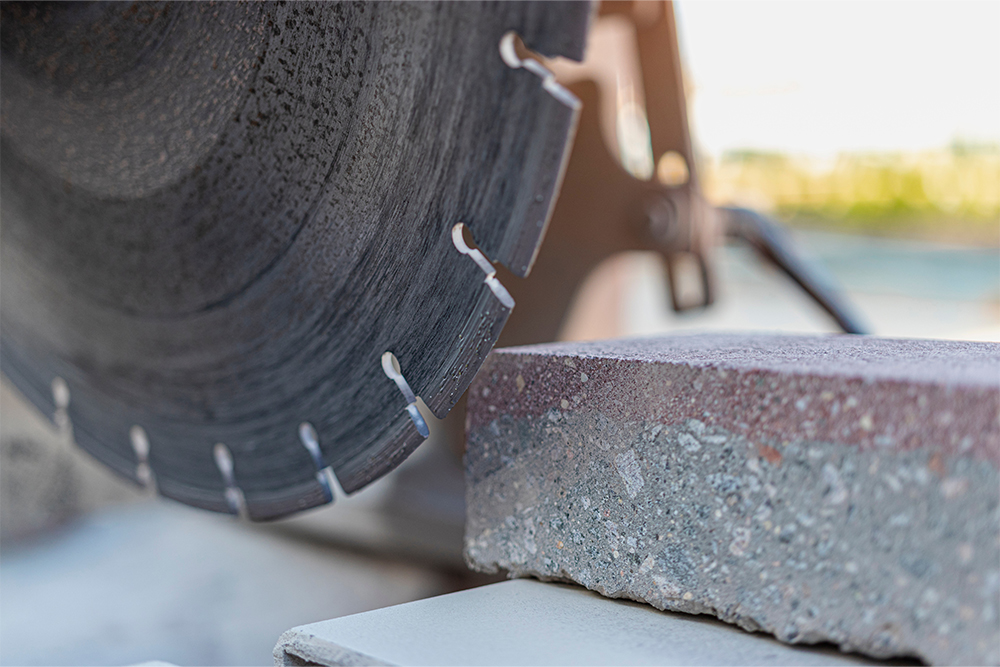
Also known as abrasive wheels, grinding wheels are commonly used in workshops, factories and businesses across the UK. When attached to a handheld tool or a piece of machinery, grinding wheels are extremely effective in cutting, grinding, and polishing hard materials.
Different types of grinding wheels are used for various purposes and that is chosen depends on the nature of the task at hand.
There are significant risks involved in using grinding wheels. If the incorrect type of wheel is used for a task, then the risk of a serious injury or even a fatality greatly increases. It is imperative that operators always choose the correct one that is best suited to the job. Let’s consider what grinding wheels are and factors to consider when selecting them.
What is a Grinding Wheel?
Grinding wheels are discs that contain abrasive particles and grains that have been bonded together to form a wheel shape. Although the disc format is the most common shape, they can also be made in the shape of cones or cups.
They are attached to grinders or saws and rotated at high speeds for a variety of tasks. The abrasive grit and grains in the wheel are able to grind or cut through hard materials such as metal or steel. The abrasive grains are bonded together by either organic or inorganic substances.
Inorganic grinding wheels are fitted in a furnace and have a hard yet brittle structure that holds its form during precision cutting. These wheels usually require dressing before use to straighten the wheel or to form it into a desired shape.
Organic grinding wheels are cured at low temperatures, are shock resistant and do not require dressing. They are commonly used for cutting or grinding work that does not need to be precise.
They are categorised according to characteristics such as grit size, the bonding used, the abrasive material, the grade of the grinding wheel and the wheel’s structure.
Types of Grinding Wheels
There are various types of grinding wheel, each with its own type number. The booklet ‘Safety in the use of abrasive wheels’, produced by the Health and Safety Executive (HSE), lists 33 different types. In general, six of them are commonly used:
- Type 1 – Straight
- Type 2 – Cylinder
- Type 4 – Tapered
- Type 6 – Straight cup
- Type 12 – Dish
- Type 13 – Saucer

What are Grinding Wheels Used For?
- Straight wheels are usually used in bench grinders
- Cylinder wheels are used in horizontal or vertical spindle grinders to make flat surfaces
- Tapered wheels are wider in the centre with a surface that tapers outwards. These wheels are used to grind gear teeth or threads
- Straight cup wheels are fitted to cutter machines and used to sharpen tools or to make flat surfaces
- Dish wheels are thin with a flat centre that is raised outwards on the edge. These wheels are commonly used to cut openings such as slots
- Saucer wheels have a straight edge section and are used for twist mills and grinding cutters
Machines That Use Grinding Wheels
Handheld tools and standalone machinery typically use abrasive wheels. They include:
- Angle grinders – also known as disc grinders or side grinders, – used to cut or polish hard materials
- Belt grinders – mounted table top grinders with two different types of grinding wheels on each side, which can sharpen tools and are used for roughing or finishing
- Cylindrical grinders – used to shape the exterior of rods, tubes or bearing races
- Jig grinders – heavy machines used for complex grinding and cutting work
- Table saws – sometimes called bench saws – are used for cutting wood
- Chop saws – handheld tools used to make straight cuts in wood
- Petrol cut-off saws – handheld tools used to cut concrete, steel, stone, asphalt and other materials
What to Consider When Choose
When choosing a grinding wheel there are a range of factors that need to be taken into consideration.
Operators must take the following points into account:
- The nature of the material being ground
- How involved the task is
- What the required finish is
- The level of accuracy required
- The contact area
- The speed of the wheel
- If coolant is to be used
- The power of the machine or spindle to be used
Safety Issues When Use
Severe injuries or even death can occur if the wrong wheel is used for a task. Not only is the operator at risk but so are any persons in the near vicinity.
Injuries can be caused as a result of flying debris caused by abrasive particles, metal or wood fragments or broken pieces of the wheel. Loose clothing or long hair can be caught up the wheel to cause what is known as drawing-in injuries.
The dust, fumes and particles emitted by the work itself can be hazardous to the lungs and respiratory system. Over time, the vibrations and the noise that they emit can cause both nerve damage and hearing loss.

Safety Protocols
Preventing these serious risks requires diligent adherence to safety protocols. This includes:
- Selecting the appropriate grinding wheel for the task
- Considering material compatibility
- Properly inspecting and maintaining the wheel
- Maintaining a safe distance from the grinding process
- Wearing protective gear
- Choosing secure clothing
- Tying long hair
- Utilising safety guards to contain debris
- Implementing adequate ventilation and wearing respiratory protection to prevent dust and fume inhalation
- Minimising exposure to prolonged vibrations and noise.

Regulations Covering the Safe Use of Grinding Wheels
Guidelines governing the safe use of grinding wheels in the UK are outlined in the Provision and Use of Work Equipment Regulations 1998 (PUWER). The aim of PUWER is to ensure that all persons who operate grinding wheels do so in a safe and responsible manner.
PUWER requires that the tool or machinery used is kept in good working order and that it undergoes regular maintenance. All tools and machinery must be inspected and tested on a regular basis. The operator must be competent to carry out the task and wear appropriate personal protective equipment (PPE).
Under PUWER, it is a legal requirement that all grinding wheel operators be trained and certified.
Materials Used in Grinding Wheels
Grinding wheels use abrasive materials bonded together to create a durable cutting surface. The type of material used depends on hardness, strength and performance for specific tasks.
Different abrasives work best for different materials. Here are the most common types:
- Aluminium Oxide (Al₂O₃) – Tough and durable, commonly used for ferrous metals, including steel and alloy steel.
- Silicon Carbide (SiC) – Sharp and efficient, ideal for non-ferrous metals, ceramics, cast iron and glass.
- Cubic Boron Nitride (CBN) – Exceptionally hard, suitable for high-speed steel, tool steels and superalloys.
- Diamond – The hardest abrasive available, designed for precision grinding of carbide, ceramics and glass.
In the UK, grinding wheels must comply with PUWER to ensure they are safe for use.
They should also meet the BS EN 12413 standard, which sets out safety and quality requirements to reduce the risk of accidents. Employers are responsible for risk assessments, selecting appropriate equipment and following regulations to keep work environments safe.

Training Courses
Human Focus offers online training courses that provide participants with full knowledge of the risks and the key safety principles involved in operating grinding wheels. These courses are approved by the International Institute of Risk and Safety Management (IIRSM).
The Human Focus Abrasive Wheel Training course can be taken online to fit around work schedules. Participants are awarded a certificate upon completion of the course that can be downloaded immediately. Trainees will gain the knowledge to set up, maintain and operate tools and machinery that use grinding wheels in accordance with the regulations as laid out by PUWER.



















































































































































































































































































































































































































































































































































































































































































































































